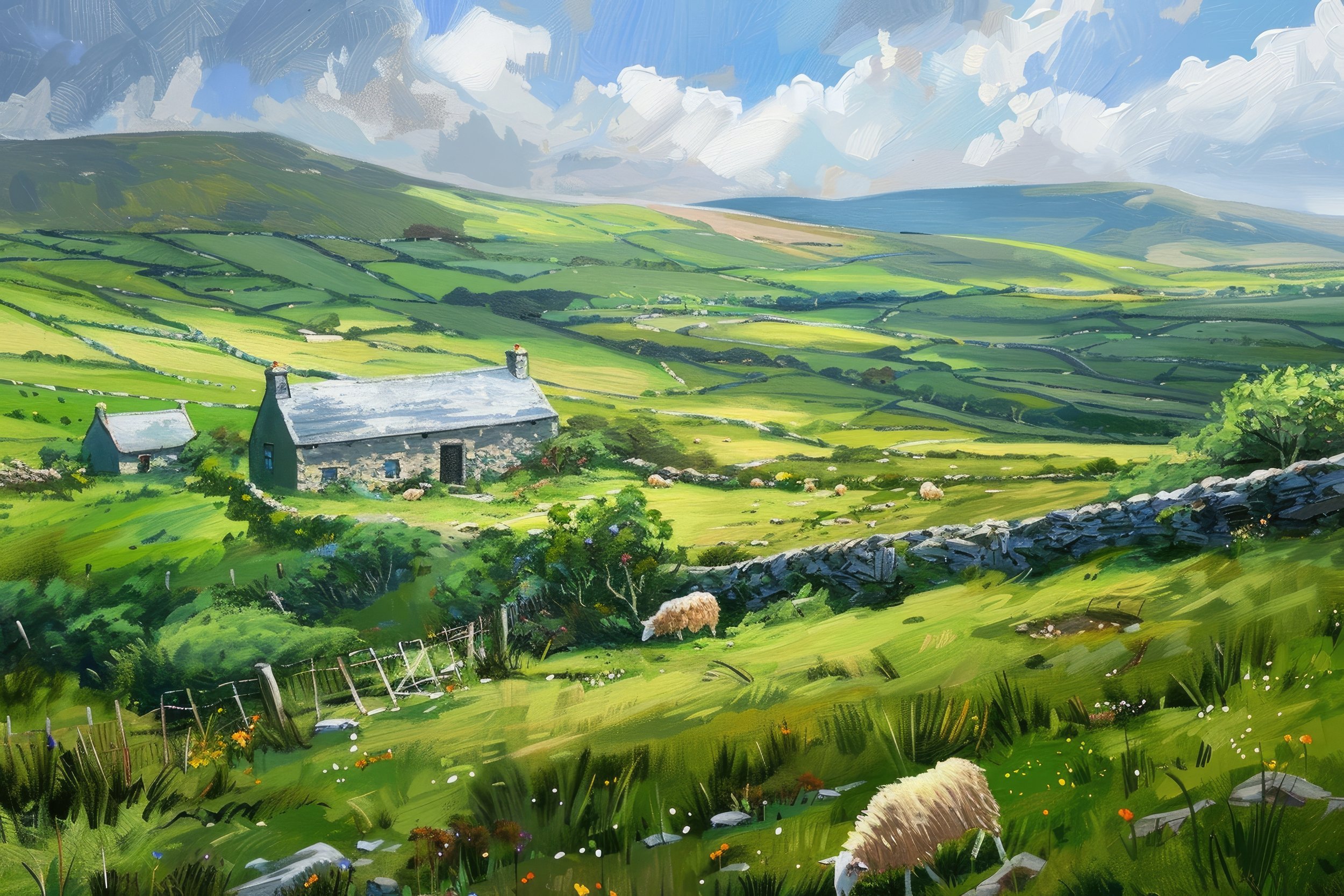Challenges and Key Guidelines for Green Belt Development
Open Green Land may often be protected by Green Belt
If this is the case development restrictions apply to preserve natural beauty, wildlife habitats, and agricultural usage.
Challenges and Key Guidelines for Green Belt Development
Green belt land often carries a mystique, promising idyllic rural living close to nature, but the reality for property developers is often far more restrictive and complex. Recent cases of scammers subdividing green belt plots into seemingly "buildable" parcels have caused confusion and left many buyers disappointed and at a huge loss. To navigate this maze of rules and avoid pitfalls, let’s break down the challenges and regulations around green belt development.
Understanding Green Belt Land
Green belt areas are protected to curb urban sprawl, maintain rural charm, and conserve open spaces for wildlife, forestry, and agriculture. While the concept is appealing, not all green belt land is pristine countryside—some plots may include neglected industrial sites or abandoned car parks. Regardless, the goal is to ensure these areas remain undeveloped or minimally impacted.
Building on Green Belt Land: Is It Possible?
The simple answer: it depends.
A key restriction for such application when using a standard full or householder planning application is the 25% development rule, which limits new structures to no more than 25% of the original volume of the existing property. Exemptions are possible but rare, often requiring extensive use of sustainable energy systems—something usually impractical for small plots.
For many homeowners there is an alternative planning approach by using permitted development rights. These offer the most viable path forward. in their cases. The permitted development rights allow specific types of extensions or conversions without the need for full planning approval.
What Are Permitted Development Rights?
Permitted development rights let property owners bypass lengthy planning processes for certain projects, provided they meet strict criteria. Common examples include:
Rear and side extensions
Wraparound extensions
Loft and garage conversions
Adding a new storey or flat
That said, not every property qualifies. Flats, maisonettes, and listed buildings are excluded, and even eligible homes must adhere to detailed rules about size, height, and materials.
Navigating Restrictions in Green Belt Areas
Although green belt land isn't categorized as Article 2(3) land—which includes National Parks and Conservation Areas—its protections can complicate building projects. Your permitted development rights generally still apply, but gaining approval for more significant work often requires detailed negotiations with planning authorities.
Pro Tip:
Even if your project doesn’t need planning permission, applying for a Lawful Development Certificate (LDC) is a wise move. This document confirms your build complies with the regulations at the time of construction, safeguarding you against future policy changes.
Why an Architect Is Essential
For green belt projects, the expertise of an architect is invaluable. They can:
Determine what’s feasible within the rules.
Design compliant plans.
Act as your representative in planning applications or certificate processes.
Working with a professional minimizes errors and maximizes the chances of a successful outcome.
All About Lawful Development Certificates (LDCs) in general
An LDC isn't mandatory but provides peace of mind and legal security. To apply, you’ll need:
A completed application form
Supporting documents (e.g., architectural drawings)
A site location plan
The required fee
The process usually takes about 8 weeks, and although simpler than planning permission, it’s still beneficial to have professional guidance.
Outbuildings and Sheds on Green Belt Land
Want to add a shed? Good news: green belt restrictions for outbuildings align with general rules elsewhere. Under Class E of permitted development rights, your shed must:
Cover no more than 50% of the curtilage (excluding the original house).
Stay behind the principal elevation of your house.
Comply with height limits: 4m for dual-pitched roofs, 2.5m near boundaries, and 3m otherwise.
Other options include loft conversions, solar panel installations, and small porches under 3m².
Key Facts
Green belt homeowners can still use permitted development rights, but restrictions apply.
Properties like flats and listed buildings aren’t eligible for these rights.
Navigating green belt regulations requires careful planning and often professional help.
Securing a Lawful Development Certificate adds legal assurance for your project.
Final Thoughts
Developing green belt land requires a delicate balance of creativity and compliance. While the challenges are significant, they aren’t insurmountable—especially with the right professional support. An experienced architect can turn red tape into a roadmap, helping you achieve your vision while staying within the rules.
Finally, if you’re ever offered a too-good-to-be-true deal on green belt land, remember: scams thrive on ignorance. Stay informed, ask the tough questions, and consult trusted experts to turn your green belt dreams into reality.

